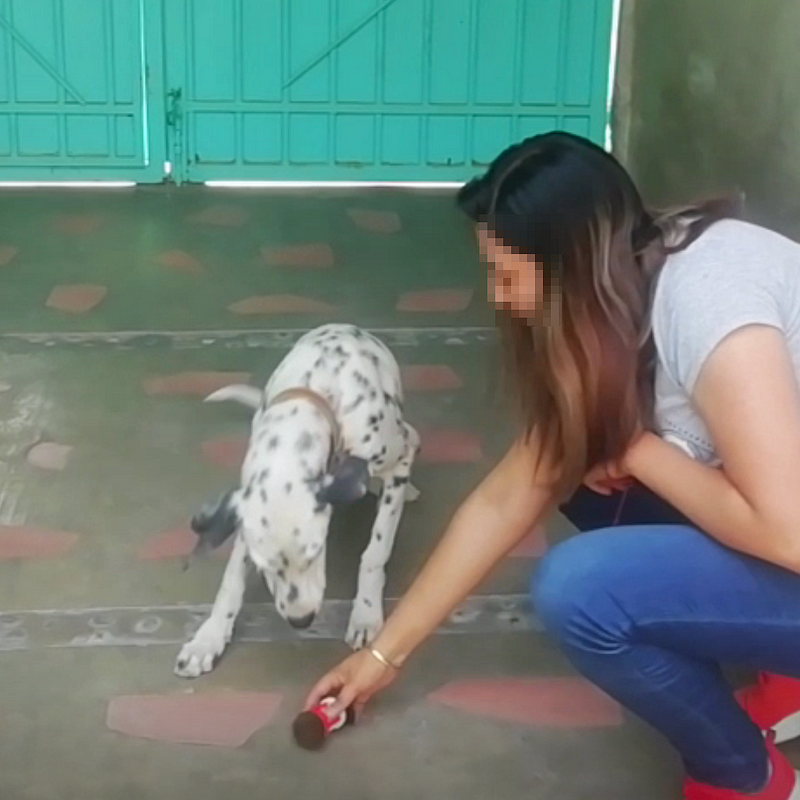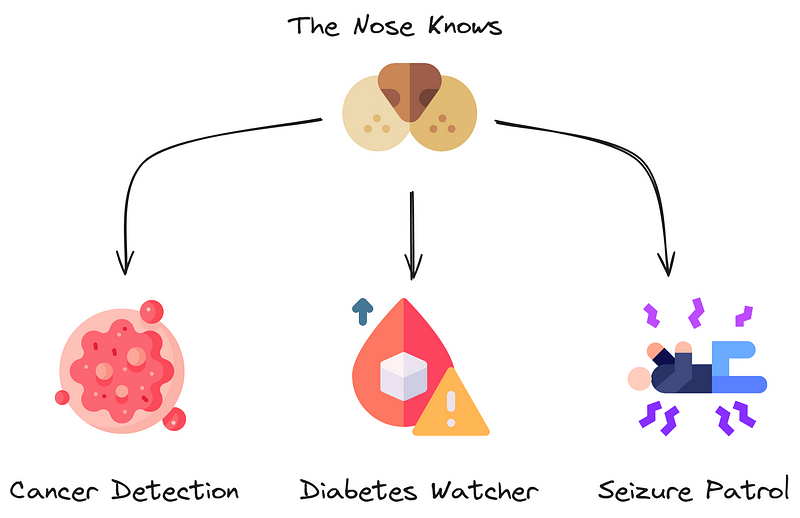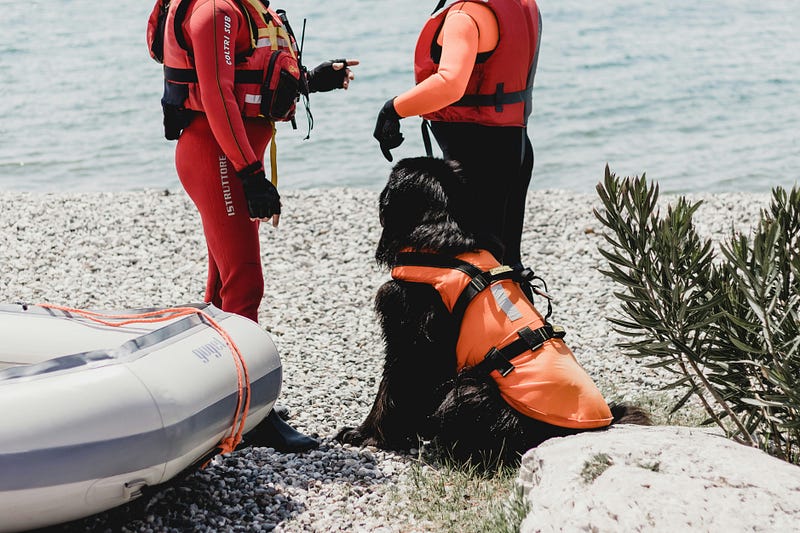- AI in Lab Coat
- Posts
- What if Your Dog Could Talk? The Surprising Benefits of AI Bark Translation
What if Your Dog Could Talk? The Surprising Benefits of AI Bark Translation
Unlocking 'paw-sibilities' by understanding dog language for better health

Ever wonder what your dog is trying to tell you? What if, instead of barking, your phone could translate those sounds into human language?
woof: “Hey, a squirrel!”
or
woof: “I lick my butt, then your face. Just saying.”
We’ve all seen the amazing advances in generative AI in recent years— language, audio, visuals.
These advances had the shock and awe factor. Now, we could soon see the possibility of translating barks into natural language.
Why Do We Need To Understand Barks?

Photo by Robert Gramner on Unsplash
Decoding dog barks like human speech may eventually become a reality.
This isn’t just a fun science experiment. Understanding our four-legged friends will shape how we think about future companion therapy, helping us detect their moods and intent more accurately.
For years, veterinarians and canine behaviorists have faced the challenge of understanding what a dog’s bark truly means. Is it a warning, a call for attention, or something else entirely?
This is particularly important for service dogs.
Although this research is still in its infancy, new discoveries could bridge the communication gap between dogs and their humans, potentially making assistive and therapy dogs more effective.
To be clear, this technology won’t translate dog barks into whole sentences with nuanced emotion and complex intent — a Shakespearean dog, if you will.
That would be terrifying.
Rather, it could better aid their owners who may have difficulty communicating, walking, or expressing their emotional needs. These dogs can seek help from nearby humans when their owners are in trouble.
So, instead of being frightened by a random dog barking at you, it may be equipped with tools to help guide you to someone in need.
Woof You Believe It? AI Understands Dogs
The journey to understanding dog barks started with a simple yet ambitious question: can AI understand dogs like it understands humans? Researchers at the University of Michigan and the National Institute of Astrophysics, Optics, and Electronics decided to find out.
They began by gathering thousands of dog barks from 74 different dogs, all reacting to various scenarios — like seeing a stranger, playing with their owners, or feeling scared.
By training their models with thousands of dog barks in different scenarios, the AI learned to recognize subtle patterns in pitch, tone, and contexts, much like how it learned to differentiate between human voices and accents.

Data collection for the stimulus “playing with toy”; the owner stimulates the dog using the toys with which the dog normally plays. Image from Research Article. Permissions: CC by 4.0.
The results were astounding.
The AI model could accurately identify individual dogs by their barks, recognize different breeds, determine the dog’s gender, and even understand the context of the bark — whether the dog was excited, anxious, or alerting to a threat.
One of the most exciting discoveries was how effective the AI model became at recognizing the context of barks. In the future, this could help us understand if a bark meant “stranger danger” or “let’s play.”
These findings aren’t just for novelty. They hold real promise for providing mental and physical health support.
“By using speech processing models initially trained on human speech, our research opens a new window into how we can leverage what we built so far in speech processing to start understanding the nuances of dog barks.” -Rada Mihalcea, professor and author of the research.
The Future of Canine Assistance With AI Enhancements
The ability to translate dog barks with AI isn’t just about fetching new insights; it has far-reaching implications in medical, assistive, and therapeutic settings.
Many of these applications are already well-established in practice, but with AI enhancement, they can become even more precise, effective, and responsive, ultimately improving the quality of life for both humans and their puppy companions.
1. Sniffing out sickness
Our canine friends have an incredible sense of smell, proven through many studies to be capable of detecting human diseases — oftentimes even better than any medical diagnostic test.

Detection of sickness through smell — Figure by Author, icons from flaticon.com
By being trained to detect conditions like cancer, diabetes, or oncoming seizures, these AI-powered doggy assistants could alert their owners as soon as they detect the illness instead of waiting for you to become seriously sick.
For example, a diabetes alert dog could quickly signal a drop in blood sugar levels, leading to faster action and preventing serious health issues. Another example is the detection of cancer in its early stages, where it is most treatable.
2. Canine Sidekick
Guide dogs are the eyes for the visually impaired, the ears for those hard of hearing, and the trusty sidekick for those with physical disabilities.
These pups are trained to navigate through busy streets, avoid hazards, and assist their owners with daily tasks, providing them with greater independence and confidence.
With AI-enhanced bark translators, these personal sidekicks could convey more complex information or give detailed alerts about tasks they’re performing. The owners could receive notifications for identifying specific obstacles, signaling a change in the environment, or sending alerts for who is ringing the door.

AI Enhanced Support — Figure by Author, icons from flaticon.com
In addition to physical assistance, therapy dogs are remarkable companions that bring comfort and healing to many.
Examples already in practice include therapy dogs used in hospitals for healing, helping children with autism, and general emotional support animals to help those with depression, anxiety, or loneliness.
With AI assistance, their impact can be even greater.
AI-powered therapy dogs could help healthcare providers by detecting emotional states, rises in stress and anxiety, and changes in patient health conditions. These dogs can then communicate these subtle cues to healthcare professionals, who might otherwise miss them. This ensures a more comprehensive understanding of the owner’s feelings and needs.
3. Search and Rescue Dogs

Photo by Ashley de Lotz on Unsplash
Search and rescue dogs are heroes with an incredible sense of smell and a drive to save lives.
Disaster response dogs are trained to find people trapped under rubble after natural disasters like earthquakes and hurricanes. They can locate survivors quickly, providing immediate assistance when every second counts.
Not every scenario where a person is trapped is the same. Are they hurt? Are there other hazards? How deep are they?
If these rescue dogs could communicate precise information about the location and condition of a buried person to rescuers, operations would be more efficient and safer for everyone.
Expanding Beyond Canine Language Translation
The future of understanding canine language is full of potential.
Hopefully, other researchers will be inspired by this work to expand the datasets to include more breeds and contexts, further refining the AI’s ability to understand a broader range of dog vocalizations.
As our understanding of canine communication becomes more accurate, many interesting applications could emerge.
High-tech collars
What if we could turn a dog’s collar into an integrated translator equipped with mini-speakers that digitally communicate in human language?
This technology could provide pet owners with instant insights into their companion’s intent, such as notifying when their owner needs medication, requires assistance, or is experiencing distress.
Additionally, the collar could alert nearby people in case of emergencies, making it easier for assistive dogs to effectively help their owners.
Understanding animal communication
The first thought that came to mind after reading this study was:
What if this model was used for other animals? What about interspecies communication — could a dog talk to a cat?

Photo by Daniel Tuttle on Unsplash
What if we could understand the vocalizations of cats, birds, or even wild animals? Do whales really sing? Are hyenas really laughing?
Even more fascinating, do animals have regional accents? For example, would a cow from Texas “moo” differently than one in France?
Discoveries like this could open up a new field in animal behavior and communication. Perhaps there are other animals that could be just as effective in therapy and daily assistance.
Advanced emotional recognition
We all know our puppies express a range of emotions that can be understood. But what about more complex emotions like jealousy, guilt, or nostalgia?
Even more interesting, do different species of animals have different ranges of emotions, some harder to detect?
Research has shown that some animals, like primates and elephants, exhibit behaviors suggesting complex emotions. But what about less-studied creatures? For example, can a lobster express joy, or can a worm feel happy?

Photo by Eric Ward on Unsplash
We often struggle to understand animals, making it hard to empathize with them. We can’t quite connect with their emotions or grasp their mental state.
What if that changed?
If we can understand animal emotions; feel what they feel. How would our views change? Would more of us decide to become vegans?
Let’s face it, there’s a hierarchy in which animals we protect. What’s the difference between puppies and piglets? Cats and shrimp?
As research progresses, we can expect these technologies to become more accessible and integrated into everyday life, hopefully enhancing our bond with animals.
If you liked the article, subscribe for more AI in Healthcare and Biotech News!

What content do you want to see more of? |
Reply